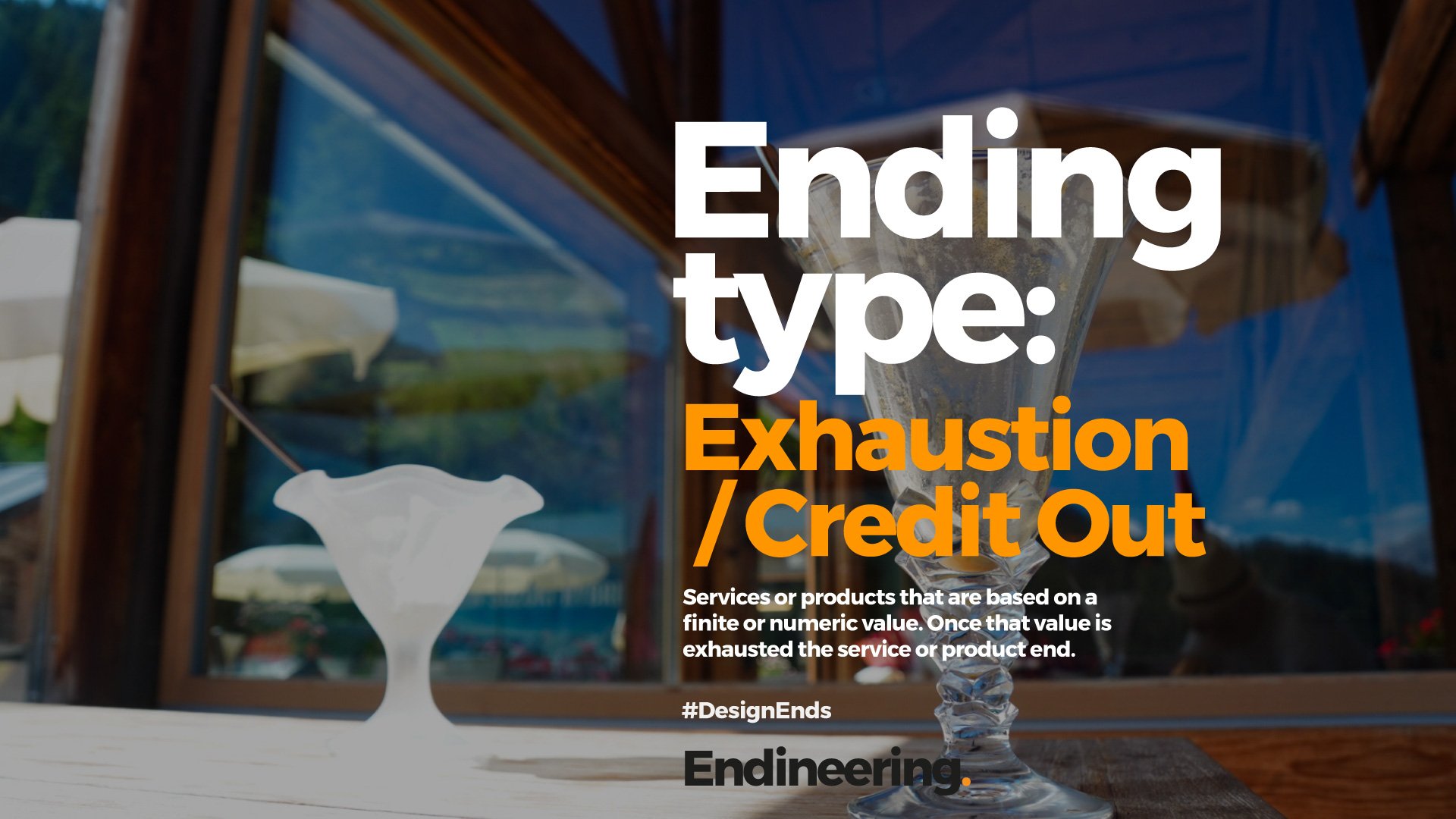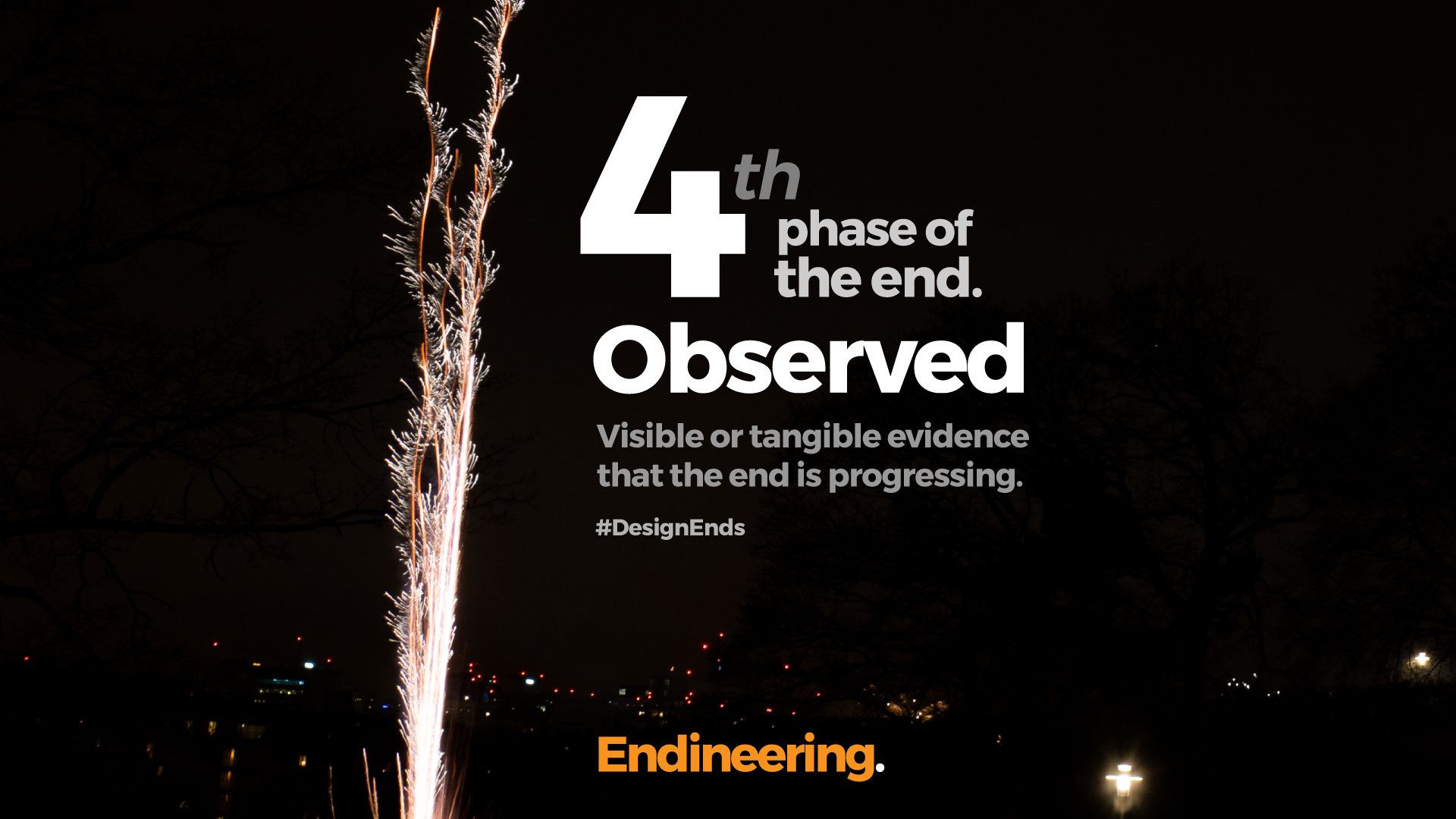

Ending Type: Exhaustion / Credit out
Services or products that are based on a finite or numeric value. Once that value is exhausted the service or product end.
Examples included: batteries being discharged, food being consumed, and tyres being run bald. In digital we can see examples of storage being filled up. A currency is common - Dollars, Pounds, Euros, for example. But it may also be represented by a pseudo currency, such as points or credits which have been created by the provider. Some national authorities use a points system such as points on your driving licence (UK) or 3 strikes law in the (US).

Phase 4. Observed.
There are 7 phases of the consumer off-boarding experience. Each one has different characteristics, needs and opportunities. The fourth of these phases is Observed, where the consumer experiences visible or tangible evidence that the end is progressing.
